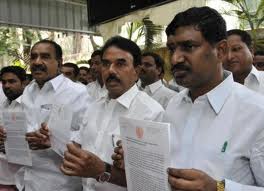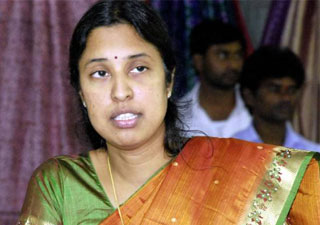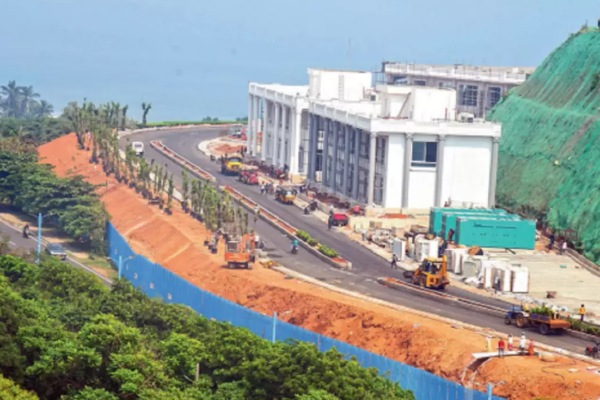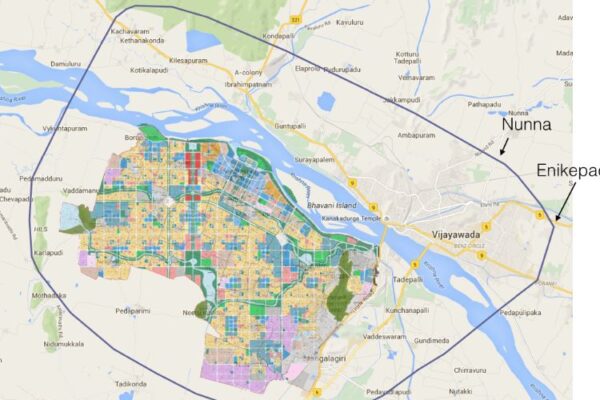Need for “White Paper” on implementation of Presidential Orders on employment in Andhra Pradesh by K V Narayana Rao
 “Telangana State, a Popular Demand: Everything you wanted to know about the injustice caused to Telangana with statistical data upto 2010 with relevant tables in every chapter”, written by K.Y.Reddy, an advocate, was published in 2011 by Deccan Telangana publishers. In its 222 pages, it lists, in different chapters, “injustices” in “income and expenditure, education, capital city, judiciary, languages and culture, irrigation, employment and power sector”.
“Telangana State, a Popular Demand: Everything you wanted to know about the injustice caused to Telangana with statistical data upto 2010 with relevant tables in every chapter”, written by K.Y.Reddy, an advocate, was published in 2011 by Deccan Telangana publishers. In its 222 pages, it lists, in different chapters, “injustices” in “income and expenditure, education, capital city, judiciary, languages and culture, irrigation, employment and power sector”.
Non-Mulks in mulki posts by 1968: In the chapter on employment, it is stated (page 159), that 22000 persons were employed between 1956 and 1968 in violation of the Mulki rules relating employment. The source for this is not indicated The Report on Telangana Safeguards (Public Employment), submitted in 1969 by a committee of Jurists appointed by the Government of India and headed by Justice Wanchoo states as follows:- “The figures of appointment during the period 21st March 1959 to the end of September, 1968 show that 92,552 posts(in Telangana) which required the residential qualification under the Andhra Pradesh Public Employment Recruitment as to Residence Rules, 1959 were filled. Of these 88164 were filled by persons with the requisite residential qualification, 799 were filled by persons who had not the residential qualifications, but in whose case exception has been made by the state government; and the remaining posts (3589 appear to have been filled by persons, who were not qualified in accordance with the residential qualification and in whose case no exception has been made by the state government” (see page 4 of the report). Compare this figure of 3589 with 22000 given by K.Y.Reddy in his book. (The figures given by the Jurists would mean that on an average, in ten years; in each of the 10 districts, ten appointments were made in violation of the rules. Was this number monstrous?
Non-locals Telangana by 1985:
On page 159, K.Y.Reddy mentions, again without indicating any authoritative source, that 58962 were appointed between 1975 and 1985 in Telangana districts in violation of the presidential order, 1975, issued in pursuance of Article 371D. The insinuation was that these 58962 were from non-Telangana districts i.e. from coastal districts and Rayala seema. The Telangana NGO’s union, K. Chandrasekhara Rao, (KCR) president of Telegana Rashtriya Samithi (TRS) and Osmnia University Professors repeatedly quote this number approvingly. How did they arrive at that figure?
In discussions on employment in Telangana districts of Andhra Pradesh a reference is made often to G.O.610 issued in 1985 December by the Government of Andhra Pradesh. Organization of local cadres in pursuance of presidential order, 1975, issued under Art.371-d of the Constitution of India was completed by 1978. The Telugu Desam Party headed by N.T.RamaRao came to power for the first time in 1983. The quinquennial census of Government Employees, conducted in 1981 (the earlier one was in 1976) was published in 1983. Going through it, the employees first in RayalaSeema districts, and then in Telangana districts began to make allegations about large scale violations of presidential orders in the allotment of employees to local cadres.
“Nativity” – i.e., place of birth and the district in which it was located was one of the items into the census schedule utilized for collection of data on employees. One of the published tables in the census, 1981, showed the number of total employees in each of the districts as well as the number of employees “native” and “non-native” for the district.
The Telangana districts, for purposes of Presidential Order were divided into two zones. : Zone V and Zone VI (Zone VI interalia included Hyderabad and RangaReddy districts. The rest of the districts in Andhra Pradesh are divided into 4 zones I, II, III and IV (zone IV comprised the districts which are collectively known as Rayalaseema at present). It is just commonsense that a native in one district (or zone) is ipsofacto a non-native in all other districts (zones): i.e. a ‘native’ in Kariam Nagar (in Telangana) is a non-native’ in all other districts (whether they are in Telangana or Rayalseema or other districts).
The Presidential Order refers only to ‘local’, – as defined in the order itself. It does not use the word ‘native’. A ‘Native’ may sometimes be a ‘local’ but not always so.
KCR and others want to show that a large number of non-Telangana employees were working in Telangana in violation of the Presidential Order. For this purpose they total non-natives in each of the Telagana districts and arrived at the figure 58962 and broadcast this figures as the number of ‘Andhras” in ‘Telangana’. In light of what was stated in the previous paragraphs, this is a mischievous misinterpretation of the census of employees, 1981.
The Government of Andhra Pradesh, after considering the matter at length, and going through the reports of the committees and discussions with employees’ organizations issued orders for providing remedial measures on the questions raised by the employees. G.O.610 was the order in relation to Telangana employees. Steps were to be taken within six months. The Telangana employees could have raised their voices if they felt satisfactory measures were not taken by the different departments of the government. There is no record of such protests by the employees. Nor was there any serious discussion on the question during the Congress rule in the state in 1989-1994. K.Chandrasekhara Rao (KCR), had been a member of Telugu Desam Party from 1983 and held important ministerial position till 1999 elections. He had to be satisfied with the position of Deputy Speaker after the elections. In 2001 he chose to quit the Telangu Desam Party and setup Telangana Rashtra Samithi (TRS) with the single point agenda- the formation of separate Telagana state. He now raised the question of implementation of G.O.610 about a decade and a half after it was issued. The Telugu Desam Party government, now headed by Chandra babu Naidu, immediately set up a one-man commission, headed by Girglani, a retired, IAS Officer of Andhra Pradesh of Sindhi origin. The commission was to suggest remedial measures for rectifying the violations. KCR represented to the Girglani commission, the question of 58962 non-Telangana employees working in Telangana districts in violations of the presidential orders.
In considering the Reports-interim and final- of the Girglani commission, some points are worth noting:-
(a) The commission did not give any credibility to the number of 58962 non-Telangana employees working in Telangana districts in violation of presidential orders.
(b) Telangana employees alleged large scale violations in allotment, but they did not give any specific instances. They stated and Girglani agreed with them that it was for the departments of the government to find out the violations.
(c) The commission was to receive representations from individuals associations in the matter of violations. In view of the vociferously articulated ‘injustices’, over a period of about 25 years one would expect thousands of people making representations of their grievances, but the facts were otherwise. Proceedings of the Commission indicate the nature and number of grievances. The Interim report speaks of less than 100 and the final report of 100. Both the reports also show that a good number of these grievances did not come within the purview of the commission.
(d) The commission suggested legislation based on consensus, on the lines of a Karnataka Act in 1973 to overcome all the problems arising from integration of services in Karnataka after States Reorganization in 1956. The Telangana NGO’s chose only to ignore the suggestion.
Census of employees, 2001:
The final report of the Girglani Commission refers to the census of Andhra Pradesh government employees in 2001, which provided data on ‘locals’ as well as ‘non-locals’ and the number of employees who were outside the presidential order for each district. According to Part II Table I-(b) of on page 130 of Girglani commission Final report, the total number of government employees (NGOs+classIV+Ohers) in zones V and VI ( that is the districts in Telangana) was 180080. Of them the employees not covered by the presidential order were 17821(9.9%), the non-locals were 16653(ie.,9.25%). The rest 145536 (80.85%) were locals. The non-locals in Hyderabad district were 13.6%, in Rangardley 10.26%, in Nizamabad 10.55% and in Adilatbad 10.70%. In the rest of the Telangana districts, the percentage of non-locals was quite low. Here again, treating all the 9.25% non-locals as if they were all from the non-Telanganas districts is irrational and mischievous. What is important is, that even with all these constraints in the available data, the percentage of non-Telangana employees in Telangana districts is low and within the limits contemplated by the presidential order. This had been the case in 1981 census too.
Census of employees, 2006:
Census of government employees 2006, now available is the latest. Data on ‘nativity’- and not on “locals” – is collected. What is significant in the published data is that though nativity is an item included in the census schedule, no table-repeat no table– relating to number of ‘native’ or ‘non-natives’ in each district is published; but K.Y.Reddi in this book referred above says as follows:-
“In the state capital in Hyderabad city 90% employees hail from Andhra region and 10% only from Telagana region. Out of 4, 98,359 who were working in Telangana region, near above 40% non-local employees (Andhra region) i.e. 199,344 are working in violation of the presidential order….out of 57,899 gazetted officers in the state only 10 to 12% of officers hail from Telangana”. As usual the author has not given any source for these data. This may be only wild imagination.
Non-locals in Telangana by 2008: what actually is the position?
The government of Andhra Pradesh made a thorough study of about 5 lakhs employees who come under the purview of presidential order, 1975 in order to give effect to the six point formula, in 1973. Presidential order is applicable in all the districts (and zones) in Andhra Pradesh. In all the districts of Andhra Pradesh put together 17958 were identified to be in places where they are ‘non-locals’. Of these 7200 were identified in zones V and VI- i.e. in Telangana region. Of these 7200, the number of employees who were to be repatriated from one district in Telangana to another district in Telangana was 3600. The Telangana remaining were to be repatriated to non-Telegnana districts. Is this figure of 3600 appointees in 10 districts of Telangana over a period of 32 years, i.e., about 10 appointments on average per district for one year very high? Efforts have been made for repatriation of them in the past 3 years or so. The figures were given by Andhra Pradesh Chief minister, Y.S.Rajashekara Reddy on August 25, 2008 in a talk on a private channel (for details see Sakshi, August 26, 2008, Hyderabad, page6); that was in 2008, but today, supporters of separate Telanganas state like K.Y.Reddy day in and day out broadcaste that 58962 non-telangana employees are usurping the positions in Telangana in violation of presidential order. The politicians and the demagogues push the students to the frontline of agitations to be cannon fodder for police lathis and bullets. The students, emotional and gullible as they are, are inflamed by the highly exaggerated figures of non Telangana employees” usurping their (Telangana) posts. In such a mental frame, some of them commit suicide.
The situation calls for a concerted, persistent action. The Directorate of Economics and statistics, aGovernment of Andhra Pradesh, in preparing the census of government employees, should, indicate the number of posts outside the presidential orders. It should publish not merely the number of non-local employees in each district, but also indicate the districts, of which they are locals. The Government of Andhra Pradesh would do well to bring out a White Paper on “employment” providing data relevant to implementation of presidential orders so far. Such data is necessary but not sufficient. It needs to be supplemented with the basic data for each district such as; the growth of educational institutions over the past 50 years, the performance of these institutions-percentage of passes/classes, dropouts;, The performance of the students/locals in competitive examinations like EAMCET, and admissions to IITs and in examinations for district selection committees, Group I services, UPSC civil services etc. Comprehensive information and data on such items will enable the government of Andhra Pradesh to take policy decisions and programmes for raising the competitiveness of locals of each and every district.
Art 371-D suffers from an omission. If should have provided for periodical reports from the Governor on the implementation of the presidential orders on matters in Art.371-D. The Government of India, can at least now, takes necessary measures for this purpose.
A comprehensive white paper, providing genuine data and clarifications and covering all aspects in which injustices to different areas /zones/regions in Andhra Pradesh are being talked about since the formation of Andhra Pradesh, would be necessary for policy decisions at the state and national level.
The presidential order, 1975, relating to organizations of local centers and direct recruitment provides for reservation to the local cadres to the extent of 80%, 70% or 60% depending upon the category of employment. Another presidential order relating to admissions to higher educational institutions provides for a reservation of 85% to locals. There is no reservation for non-locals, in employment or admissions. For the unreserved i.e. open-to merit positions non-locals as well as locals are considered. The rationale behind this high percentage of reservation for locals may be questioned in courts as the Supreme Court has since long considered reservations beyond 50% as not reasonable and not permissible under the Constitutions. One may argue that Art.371-D was enshrined in the Constitutions not withstanding any provisions of the constitution and so, a Presidential Order issued in pursuance of the enabling and not mandatory provisions of Art 371-D, can make reservation to any extent .
The point for consideration is; Article 371-D does not specify the extent of reservation; it enables the president to specify the extent .Can the President specify reservation, say 100%, of all jobs located in all districts/places including the city of Hyderabad? “Not with standing” provisions only enables the president to issue an order. The extent of preference the reservation is not specified in Art 371-D and so the extent of preference /reservation to be indicated in practice will have to be subject to the letter and spirit of Article 371-D as well as of the Constitution of India.
Should the reservations, which have been in existence for more than a three and a half decades be brought down to 50%. Substantial changes, for the better, in different spheres have come about in the long period. In the light of changes and improvements, a thorough review is called for. Policy changes on important matters like these have to be based on irrefutable data and clarifications on all relevant aspects as well as meaningful consultations with all stake holders. The first step in this direction to be taken by the Government of Andhrapradhesh is to be proactive to keep the public enlightened. The Government of India has the moral responsibility in monitoring the implementation of the letter and spirit of the public policy under Article 371-D.
So far, no one has questioned either the reservation for locals or the extent of reservation. It means they are universally acceptable. So it is necessary to continue them irrespective of the outcome of the present agitations either for separation or for unity of the state.
K V Narayana Rao is ICSSR –J.P.Naik National Fellow from Political Science Department, University of Hyderabad










